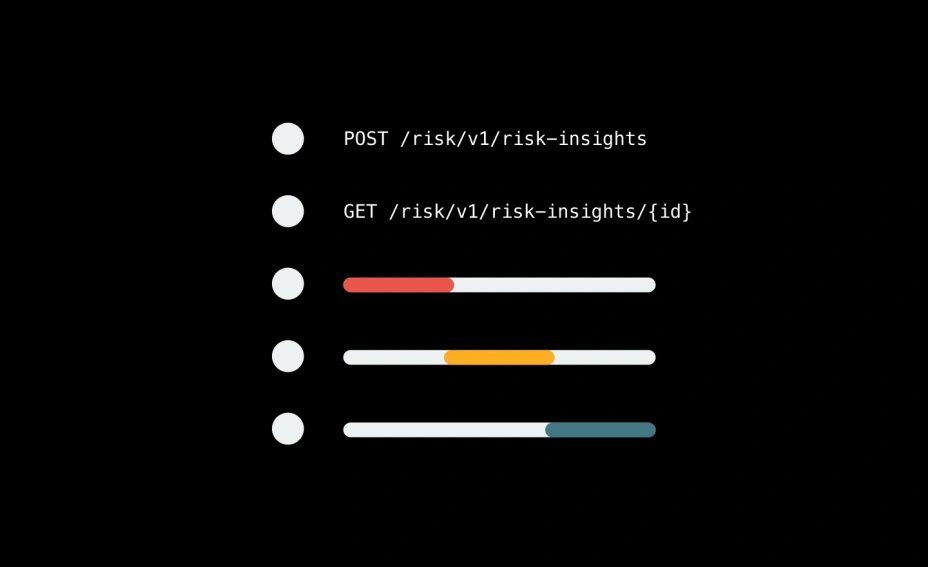Get to know the tech behind better risk assessments

An enhanced risk assessment process helps you make better informed credit decisions, which leads to consumers getting fairer deals. But how can you enhance this, exactly? Quality account aggregation and data enrichment services are the foundations of a standout credit scoring model. Here’s how it works.
Open banking can help you make better informed risk assessments – but access to data is just one part of the puzzle.
Gathering an applicant’s transaction data is the first step, but the data also needs to be made meaningful towards assessing risk.
Tink doesn’t just gather the data, but enriches it – cleaning up and categorising the data to identify spending behaviours and potential risk markers.
Understanding your would-be customers’ true financial picture is crucial to making more informed, more timely and ultimately better risk assessments. But it’s something that many lenders struggle to do. Traditional credit checks are time-consuming and often based on outdated financial records, which has a negative impact on both your business and your potential customers.
But open banking-powered risk assessments give you the opportunity to do things differently, and any model worth its salt has to begin with quality account aggregation. This lets you gather customers’ real-time financial data in seconds through one API, laying the foundation for the rest of the solution to create its magic on top of.
Aggregating the data
So here’s how you kick things off: your customer starts an application in your app or website, and selects the banks and providers where they have accounts. Tink can access and fetch transaction data from over 3,400 financial institutions across 18 European markets (where at least 95% of the population is covered).
Once the applicant completes authentication, the API delivers a more detailed view of a user’s finances than a credit check normally delivers, straight into your system. This includes data on checking, saving and credit card accounts.
Making the data meaningful
So what happens after you’ve gathered this wealth of data? You need to be able to use it in a way that’s meaningful for assessing risk. Which is the data enrichment part of Tink’s Risk Insights product comes in.
This is the process of refining and enriching the raw data, to understand and recognise patterns in people’s financial history. The first step is cleaning up the data – removing duplicates, resolving discrepancies – and then sorting transactions into categories, so you can see how and where your potential customers are spending money.
From this enrichment process, Tink can identify someone’s income, recurring transactions and understand their overall spending behaviours.
Quality data enrichment is made possible by Tink’s scalable self-learning machine model, that is continually fed transactions to learn how to classify them accurately. It doesn’t matter how many merchants enter the marketplace – the system simply keeps pace.
In the past ten years Tink’s machine learning model has refined and improved, now processing over 1 billion transactions a month – with each one making it smarter and more efficient, to ensure the best user experience. All in an instant.
Real-time decision making
This cleaned up, enriched data can then be fed to your credit scoring risk model, allowing you to use quality, real-time data to make better risk assessments and informed credit decisions, helping you to improve acceptance rates and risk accuracy, enhancing risk metrics such as NPL ratio and Gini.
Then you can present your customer with a competitive and well-grounded offer right away, and even make it actionable, allowing your customers to sign up for your service or loan, and transfer funds into their account immediately.
With the right technology in the background, the whole process from start to finish is completed seamlessly, and more accurately, in a matter of minutes.
Want to learn more? Check our lender's guide to improving risk assessments with open banking for more on the topic, and an overview of the risk features Tink can help detect.
More in Open banking

2025-06-09
11 min read
The case for “Pay by Bank” as a global term
Thomas Gmelch argues that "Pay by Bank" should be adopted as a standard term for open banking-powered account-to-account payments to reduce confusion, build trust, and boost adoption across the industry.
Read more

2025-06-02
3 min read
Tink joins Visa A2A – what it means for Pay by Bank and VRP
Visa A2A brings an enhanced framework to Pay by Bank and variable recurring payments (VRP) in the UK, and Tink is excited to be one of the first members of this new solution.
Read more

2024-11-19
12 min read
From authentication to authorisation: Navigating the changes with eIDAS 2.0
Discover how the eIDAS 2.0 regulation is set to transform digital identity and payment processes across the EU, promising seamless authentication, enhanced security, and a future where forgotten passwords and cumbersome paperwork are a thing of the past.
Read more
Get started with Tink
Contact our team to learn more about what we can help you build – or create an account to get started right away.
